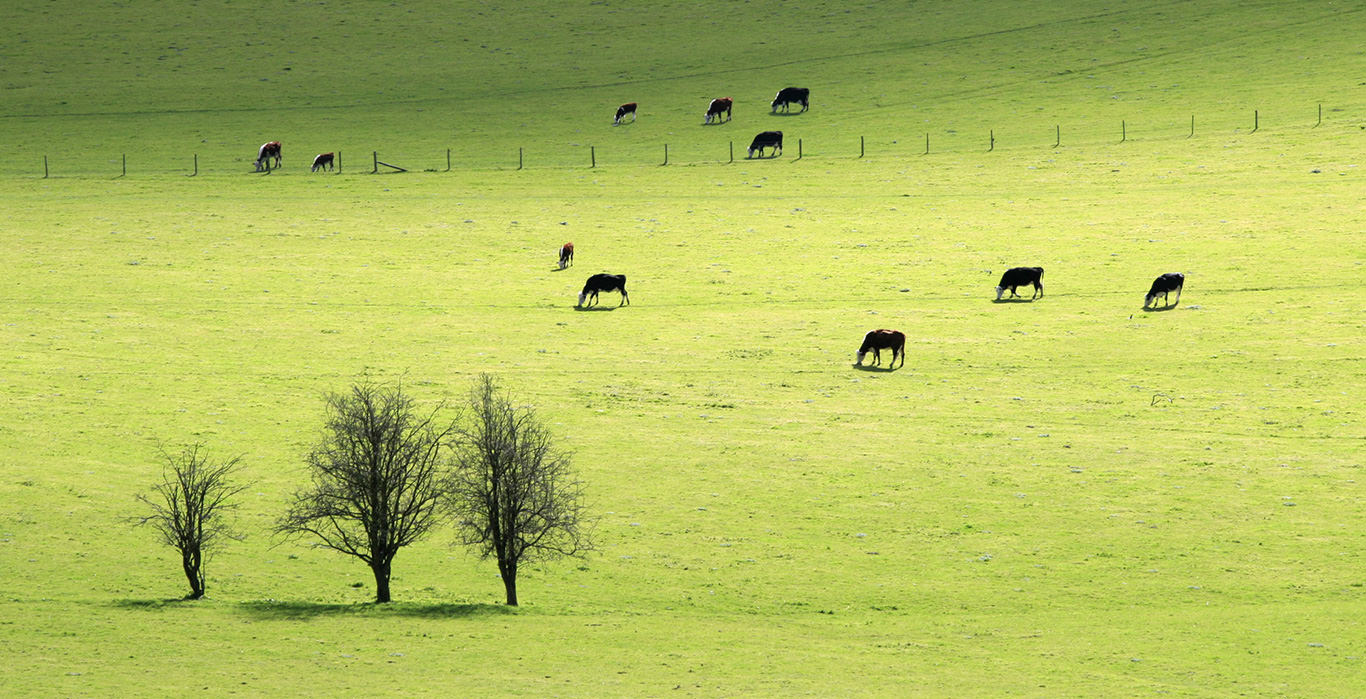
Fields and Pastures to Feed the Cows
Definition
The farm’s rangeland and fields are used to feed the animals.
Did you know ?
Every farm needs approximately one hectare of rangeland and fields to feed one cow.
Cows are herbivores, but they are also ruminants.
They need vast amounts of fibre in order for their digestive systems to function properly. On average, cows consume 54 kg of food every day. They feed on fresh grass as well as large fodder such as corn silage, grass silage and hay. The plant matter consumed is digested and converted into nutrients that naturally allow the teat to secrete milk and give the food its rich nutritional value.
Feed that varies with the seasons.
What cows eat varies according to the season. In the summer they eat fresh grass in the pasture and in the winter they eat hay and silage. In France, more than 93% of what cows eat is produced on the farm where the animals are raised.
In France, 95% of dairy cows have access to rangeland.
French dairy farming has retained very important ties to the land. In France, 95% of dairy cows have access to rangeland, of which 89% have access to more than 1000 m2 of rangeland each.
Rangeland: Major environmental advantages
The rangeland surrounding dairy farms has advantages: biodiversity, landscaping, carbon storage, water quality regulation, conservation of endangered species and habitats, well-being for the animals, and more.